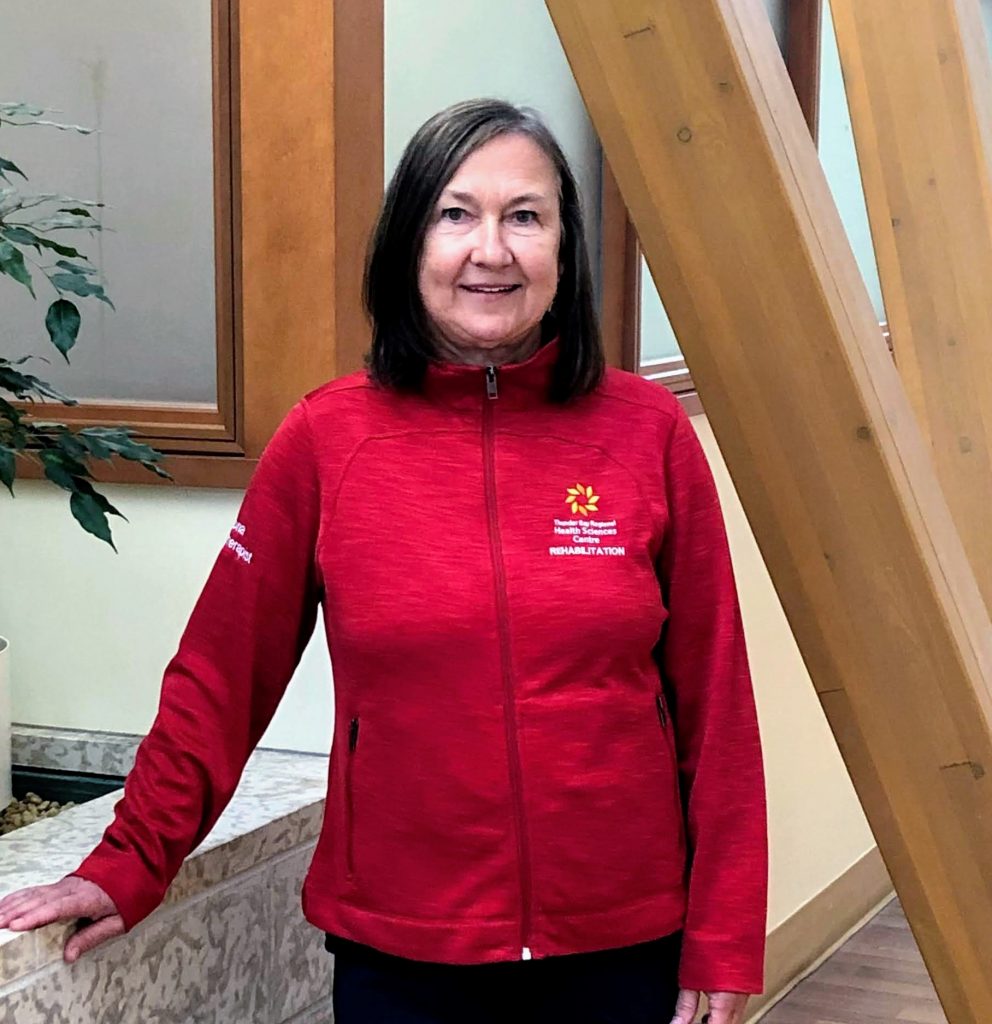Breast Cancer Awareness Month Profile: Leona DiCasmirro
by Caitlund Davidson
 Leona DiCasmirro is a physiotherapist at the Regional Cancer Centre.
Leona DiCasmirro is a physiotherapist at the Regional Cancer Centre.It’s Breast Cancer Awareness Month, and we’re highlighting staff at Thunder Bay Regional Health Sciences Centre who play a vital role in the breast cancer journey. From cancer screening to cancer treatment, there are hundreds of caring professionals that you will meet along the way. Today, we’re sharing a Q & A from Leona DiCasmirro, a physiotherapist at the Regional Cancer Centre.
Describe your role for us.
I am a registered physiotherapist who has completed clinical training hours and certification in manual lymph drainage and complete decongestive therapy. In my role, I work closely with breast cancer patients, their families and other healthcare professionals to help identify and assess lymphedema signs and symptoms, help prevent, control, and manage lymphedema, and help empower breast cancer patients to return to their daily activities.
What does it take to be a registered physiotherapist?
I went to school for physiotherapy and also have advanced knowledge, clinical experience and training that applies specifically to breast cancer and lymphedema.
What is unique about your role?
Lymphedema isn’t a word you hear every day, but those who are at risk or have the condition are often fearful. Patients want to be educated and supported. There is no cure for lymphedema but it can be managed with early detection, a treatment plan, and a self-management care plan.
What inspired you to work in cancer care.
My 10 years of clinical experience in palliative care physiotherapy and pain and symptom management paved the road for me to further my education, training and certification in lymphedema management.
How does your role impact patient care?
My role helps cancer patients develop a better understanding of lymphedema. Cancer patients during their journey will learn the benefits of exercise, what steps they need to take to provide self-care and self-management for lymphedema, how to manage signs and symptoms, and how to prevent complications associated with lymphedema.